The state and prospects of development of the naval forces of Romania (2013)
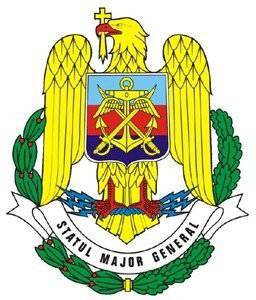
The naval forces, as one of the branches of the armed forces of Romania, are intended mainly to protect the national interests of the state in the Black Sea and on the river. Danube. In the framework of the Alliance, the Romanian Navy also performs the full range of tasks assigned to them by the NATO naval command in Europe (headquartered in Naples, Italy).
In peacetime, the naval forces are charged with the solution of the following main tasks:
- control of the situation in the territorial waters and the Black Sea economic zone;
- ensuring freedom of navigation on the Black Sea and the river. Danube;
- support for actions of border police units;
- patrolling the territorial waters of Romania;
- participation in peacekeeping and anti-terrorism operations conducted under the leadership of NATO, the EU and the UN;
- search and rescue crews in distress ships.
In wartime, the Navy solve the following tasks:
- reflection of enemy strikes on the coastal direction;
- protection and defense of objects of strategic and operational importance;
- protection of sea and river communications;
- the organization of the antiamphibious defense of the coast of the country in the event that the enemy conducts amphibious landing operations;
- support for the actions of ground forces in the coastal direction and in the delta. Danube.
The Navy has 16 warships, 20 fighting boats, and 16 auxiliary ships. In the Navy reserve there are 60 ships and boats. The number of personnel of the Romanian Navy 8 thousand people.
The system of basing and logistic support of the Romanian naval forces includes two naval bases (Constanta and Mangalia) and six basing points on the r. Danube (Braila, Galati, Giurgiu, Sulina, Tulcea, Drobeta-Turnu Severin).
The administrative control of the forces and means of the country's Navy in peacetime and wartime is assigned to the headquarters of the Navy (Bucharest). The command and control of naval forces and units in peacetime is carried out by the command fleet The Romanian Navy (Navy Constanta), and in the event of a crisis and with the outbreak of war - the joint operational command of the national armed forces through the naval operations control center (COCAN - Centrul Operational de Conducere a Actiunilor Navale) formed on the basis of the fleet command.
The organizational structure of the Navy includes the command of the fleet (as part of the flotilla and divisions of ships and boats) and the formation of central subordination (see diagram).
Fleet Command (naval base Constanza) subordinate: the frigate flotilla, river flotilla, three battalion battleships and boats (patrol ships, rocket corvettes, minesweepers and minelayers).
The composition of the frigate flotilla (naval base Constanza) includes: the frigates Mareshesht (tail number F 111), Regel Ferdinand (F 221), Regina Maria (F 222) and the support ship Constanza (281). The helicopter is armed with a three IAR-330 Puma helicopter carrier.
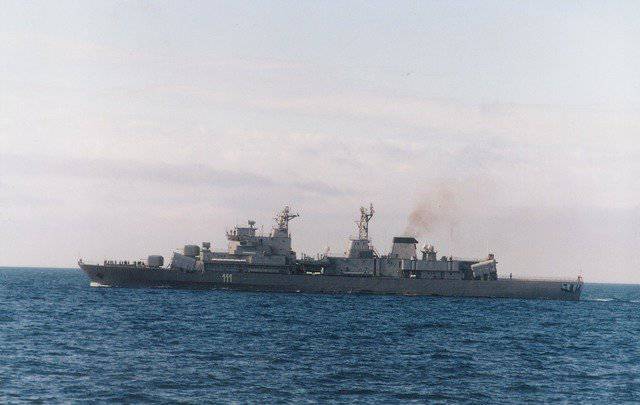
Displacement: standard 4754 t, full 5795 t.
Maximum sizes: length 144,6 m, width 14,8 m, draft 4,9 m.
Power plant: four-shaft diesel - 4 diesel with a total capacity of 32 Ltd. hp
Maximum speed: 27 knots
Armament: 4XNUXXXXXXXXXXXXXXXXXXXXXXXXXXXXXXXXXXXXXXXG (2 torpedoes 20-15), 4 anti-submarine helicopter IAR-2 "Alouette-3" or 2 helicopter IAR-76 "Puma".
Crew: 270 people (25 officers).
The multi-purpose ship of its own design, to 2001, belonged to the class of destroyers. Originally called “Muntenia” (“Muntenia”). When designing, designers made serious mistakes concerning, first of all, the stability of the ship. In 1988, the destroyer, which did not fully complete the test program, was mothballed. In 1990-1992 he underwent a re-equipment, during which, in order to increase stability, some of the superstructures were cut off, chimneys and masts were shortened, and the Termite heavy anti-ship missile launchers were moved to the deck below, and special cutouts in the sides and deck were made under the bow complexes. At the same time, the outdated RBU-1200 was replaced by more modern RBU-6000 and turrets were installed under the Strela MANPADS. Once again, the destroyer was put to the test in 1992 under the new name “Marasesti” - it was renamed to commemorate a major battle between Russian-Romanian and German-Austrian troops that took place in the summer of 1917.
When building a ship, the technologies used in civil shipbuilding were widely used. All the weapons and electronic equipment were Soviet-made, and at the time of the introduction of “Merešesti” into operation, it looked obviously outdated. On the ship were installed universal radar MP-302 "cutting", radar target designation PKR "Harpoon", radar control artillery fire "Turret" and MP-123 "Vympel", navigation radar "Nyada", GAS "Argun". There were also 2 PU passive jamming PC-16. At the same time, there was no BIUS aboard the ship - for such a large fleet combat unit in the 1990s, this was already considered unacceptable.
In order to bring the classification of ships to NATO standards in the 2001 of the city of UMO, the Merešesti was officially assigned to frigates. To date, it is equipped with the satellite communication system INMARSAT SATCOM, as well as previously lacking equipment for refueling on the go. Used primarily as a training ship.
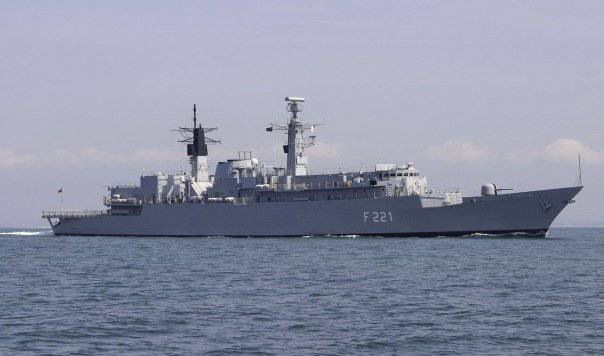
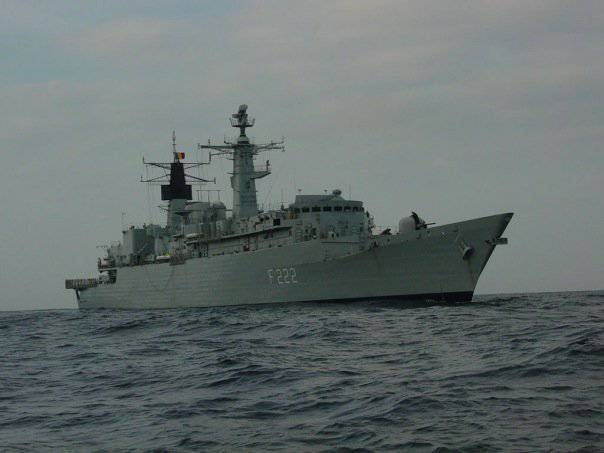
Displacement: standard 4100 t, full 4800 t.
Maximum sizes: length 146,5 m, width 14,8 m, draft 6,4 m.
Power plant: COGOG - 2 gas turbine "Rolls-Royce" "Olympus" TMZV gas-turbine power of 50 000 HP and 2 gas turbine “Rolls-Royce” “Tupe” RM1With 9900 horsepower with separate engine operation.
Maximum speed: 30 knots
Navigation range: 4500 miles at speeds 18 knots.
Armament: 1x1 76-mm AU "OTO Melara", 2x2 324-mm TA, 1 anti-submarine helicopter IAR-330 "Puma".
Crew: 273 people (30 officers).
Former English frigates F95 “London” and F98 “Coventry” of the “Broadsworth” type. Bought in the UK 14.01.2003 and renamed, respectively, "Regina Maria" and "Reghel Ferdinand." Arrived in Romania after conversion to 2004-2005. At present, several modifications of the Broadsworth frigates are also in the Brazilian and Chilean Navy.
Before leaving for Romania, the ships underwent a major overhaul of the mechanisms in Portsmouth. Armament and electronic equipment has undergone a significant simplification. So, both frigates were completely removed missiles (RCC "Exochet", the air defense system "Sea Wolf") and artillery; preserved only TA. Instead of dismantled weapons installed one 76-mm gun "OTO Melara". The composition of the radio-electronic equipment was as follows: CACS "Ferranti" CACS 1, universal radar "Marconi" type 967/968, navigation radar "Kelvin & Hughes" 1007, optoelectronic artillery fire control system "Radamec" 2500, sub-KS "Ferranhomson" type 2050 The electronic warfare system includes two 12-barreled 130-mm "Terma" passive jamming launchers.
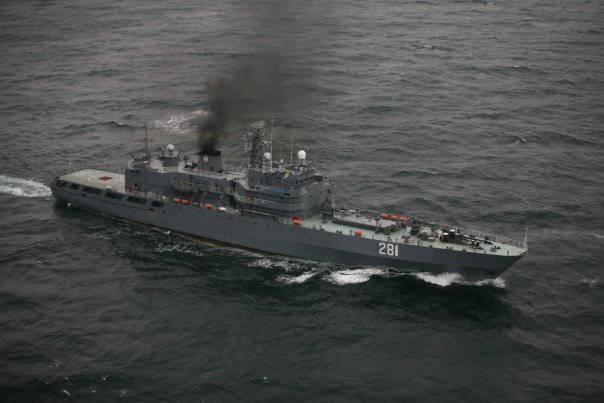
Displacement: standard 2850 t, full 3500 t.
Maximum sizes: 108x13,5x3,8 m.
Power plant: two-shaft diesel horsepower 6500
Maximum speed: 16 knots
Armament: 1x4 PU of the Strela MANPADS, 1x2 57-mm AU, 2X2 30-mm AU AK-230, 2X4 14,5-mm Machine Gun, 2X5 RPU-X-CHIXHX1200,1 -X-CHIXXXXUMUMX-CHIXXXUMNXXXXUMXNXX316-mm
Crew: 150 people.
The mother ship and ammunition transport, has cellars and cranes for the transportation and transfer of missiles, torpedoes and artillery shells to warships. Built in Romania at the shipyard in Braila, 15.09.1980 was commissioned. Radioelectronic armament: MR-302 Radar radar, MP-104 Lynx artillery fire radar and Bars MR-103 radar, Kievach navigation radar and Tamir-11 GAS. One of the same type with “Constanze” PB Midia (“Midia”), which entered into service 26.02.1982, is currently withdrawn from service and used as a blockade.
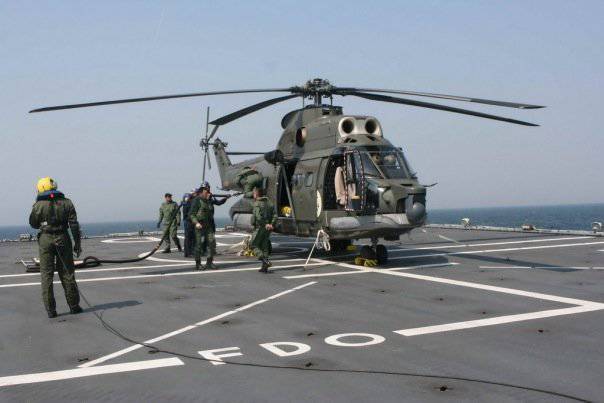
50 Division of patrol ships (naval base Mangalia) It includes: Corvette "Admiral Peter Berbunyanu" (260), "Vice Admiral Eugen Rosca" (263), "Rear Admiral Eustatsiu Sebastian" (264), "Rear Admiral Horia Mechelariu" (265), and PT boats " Smeul "(202), Visiona (204) and Vulcanul (209).
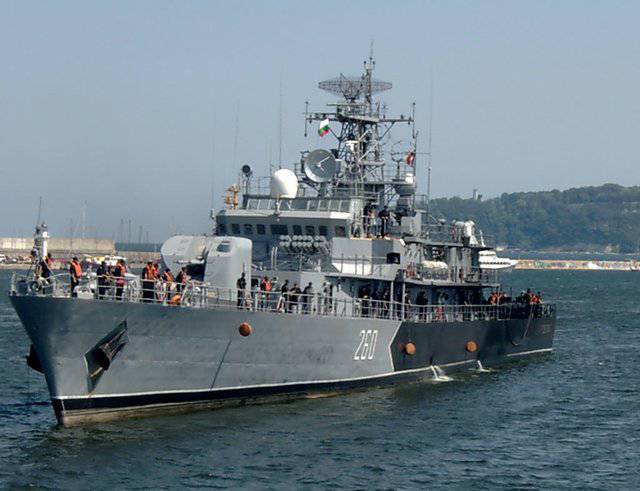
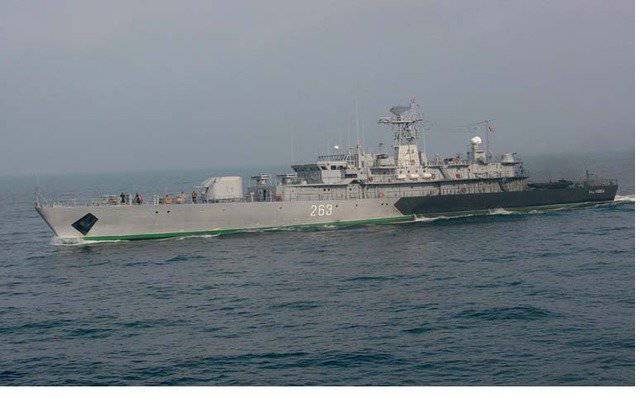
Displacement: standard 1480 t, full 1600 t.
Maximum sizes: length 92,4 m, width 11,4 m, draft 3,4 m.
Power plant: four-shaft diesel power 13 200 hp Maximum speed: 24 knots
Navigation range: 1500 miles at speeds 18 knots.
Armament: 2x2 76-mm AU AK-726, 2x2 30-mm AU AK-230, 2x16 RBU-2500, 2X2 533-mm TA (torpedoes 53-65).
Crew: 80 people (7 officers).
Designed and built in Romania at the shipyard in Mangalia, 04.02.1983 and 23.04.1987 were commissioned, respectively. Equipped with Soviet-made weapons. According to the official classification are considered frigates. Equipped with Soviet-made weapons. According to the official classification are considered frigates. A total of 4 ships were built, but two — Vice Admiral Vasile Skodrea (261) and Vice Admiral Vasile Urséanu (262) —are withdrawn from the fleet by now. The composition of electronic weapons: radar MP-302 "cutting" radar control artillery fire MP-104 "Lynx" and "Foot-B", navigation radar "Nyada", GAS MG-322. Also available are 2 PU passive interference PC-16.
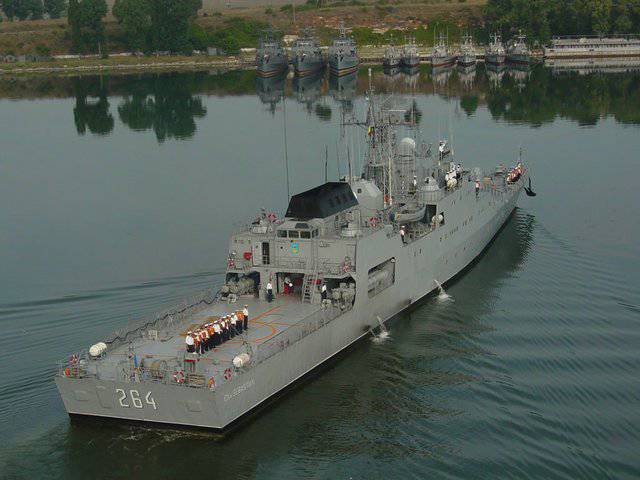
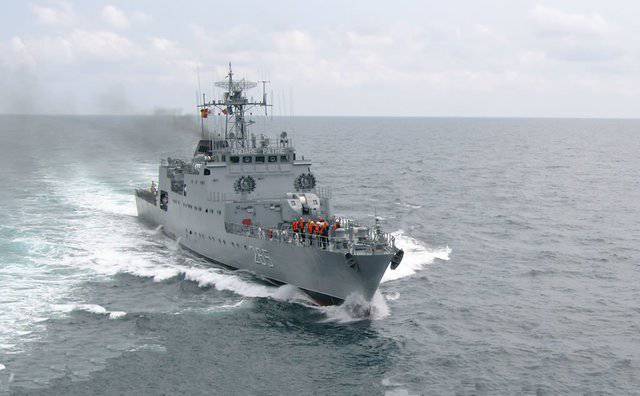
Displacement: standard 1540 t, full 1660 t.
Maximum sizes: length 92,4 m, width 11,5 m, draft 3,4 m.
Power plant: four-shaft diesel power 13 200 hp Maximum speed: 24 knots
Navigation range: 1500 miles at speeds 18 knots.
Armament: 1x1 76-mm AA AU-176,2x6 30-mm AA AU-630, 2x12 RBU-6000, 2x2 533-mm TA (torpedo 53-65), the runway for a helicopter anti-IAR-316 «Alouette-Z".
Crew: 95 people.
Corvettes (according to the official classification - frigates) of the project 1048М were designed and built in Romania at the shipyard in the city of Mangalia. 30.12.1989 and 29.09.1997 were commissioned, respectively.
They represent the development of the project 1048 with more sophisticated weapons and runways for the helicopter. True, the hangar on the ships is missing. The construction of the second corvette - "Rear Admiral Horia Machelar" - in 1993-1994. It was frozen, but it was later completed.
The ships are equipped with Soviet-made weapons. The composition of electronic weapons: radar MR-302 "cutting", radar control artillery fire MP-123 "Vympel", navigation radar "Naiad", GAS MG-322. Also available are 2 PU passive interference PC-16.
Displacement: full xnumx t.
Maximum sizes: 38,6 x 7,6 x 1,85 m.
Power plant: three-shaft diesel - 3 diesel M-504 with a total power of 12 000 hp
Maximum speed: 38 knots
Navigation range: 750 miles at speeds 25 knots.
Armament: 2x2 30-mm AU AK-230,4x1 533-mm TA.
Crew: 22 person (4 officer).
Built at the shipyard in the city of Mangalia; The whole series consisted of 12 units that were commissioned in 1979-1982. They are a copy of the Soviet 205 missile boats, but with torpedo tubes instead of rockets. Currently 9 units are scrapped; the last three are also being prepared for write-off. Equipped with radar detection NTS "Cormorant" and artillery fire radar MP-104 "Lynx".
The rocket boats of the 205 project (the 6 units of the Soviet and the 1 units of the Romanian construction) that were part of the Romanian Navy were withdrawn from service to 2004.
150 Division Rocket Corvettes (VMB Mangalia) reduced the Zavorul (188), Peskarushul (189) and Lastunul (190) missile corvettes. In addition, it includes a battery of coastal anti-ship missile systems "Rubezh" consisting of eight launchers.
Displacement: standard 385 t, full 455 t.
Maximum sizes: 56,1 x 10,2 x 2,5 m.
Power plant: two-shaft combined type COGAG-2 afterburner gas turbines M-70 with a total capacity of 24 LLC hp and 2 propulsion gas turbines M-75 with total power 8000 hp with the ability to work together engines.
Maximum speed: 42 knots
Navigation range: 1600 miles at speeds 14 knots.
Armament: 2x2 PU RCC
P-15M "Termite", 1x4 PU Stretch PZRK "Strela", 1x1 76-mm AU AK-176M and 2x6 30-mm AU AK-630M.
Crew: 41 people (5 officers).
Representatives of a series of large rocket boats of the 1241 project ("Lightning"), in various modifications being built in the USSR and Russia from 1979 to the present. RCA built in Rybinsk; transferred to Romania in December 1990 (No. 188) and in November 1991 (No. 189 and No. 190, in the USSR Navy they had the designations P-601 and P-602). The Romanian Navy is officially classified as rocket ships (Nave Purtatoare de Racchete). Equipped with a universal radar "Harpoon", artillery fire radar MP-123 "Vympel", two PU passive interference PC-16.
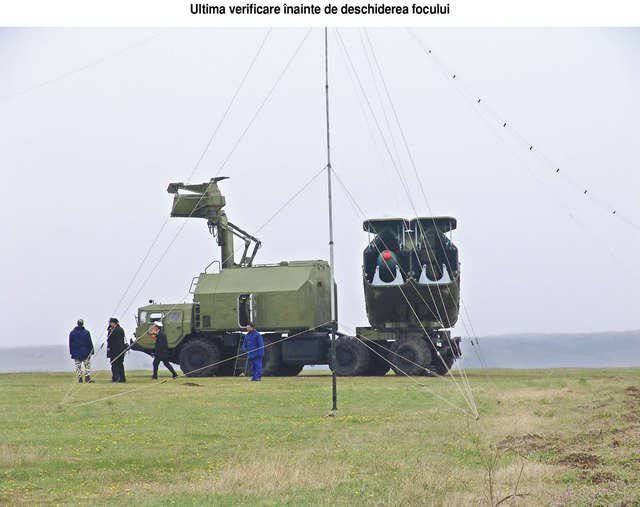
River flotilla (PB Braila) combines two divisions - 67-th river monitors and 88-th river armored boats.
67 Division including river monitors project 1316 - "Mihail Kogalniceanu" (45), "Ion Bretyanu" (46), "Lasker Katarzhiu" (47) and river gunboats "Rahova" (176), "Opanez" (177), "Smyrdan" (178), Posad (179), Rovinj (180).
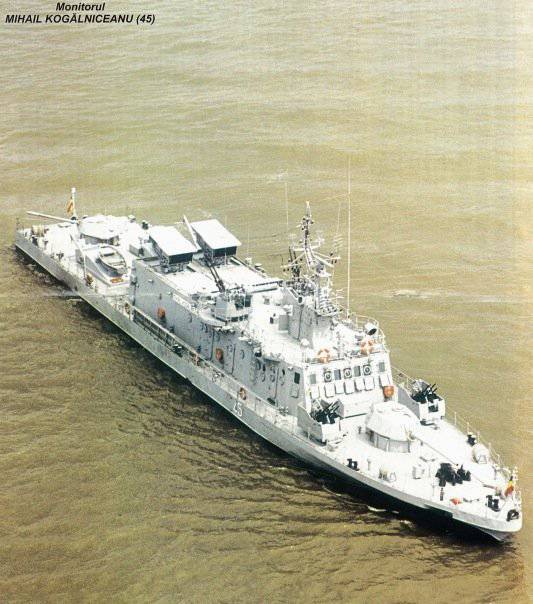
Displacement: standard 474 t, full 550 t.
Maximum sizes: 62,0 x 7,6 x 1,6 m.
Power plant: two-shaft diesel horsepower 3800
Maximum speed: 18 knots
Armament: 2x4 PU Strezla X-PUMP 2x1 100-mm AU, 2x2 30-mm AU, 2x4 14,5-mm Machine Gun, 2XXNNXX 40-mm РЗСО BM-CM-XMUM-mm, 122-21-mm Machine Gun, XNUMXXXNNXX XNUMX-mm РЗСО BM-CM-XMUM-mm, XNUMX-XOUMX-mm Machine Gun
Crew: 52 rights.
They were built at the shipyard in Turnu-Severin according to the Romanian project, 19.12.1993, 28.12.1994 and 22.11.1996, respectively, were commissioned. Officially classified as monitors (Minitoare). Armed with towers with 100-mm gun and 30-mm AU national development.
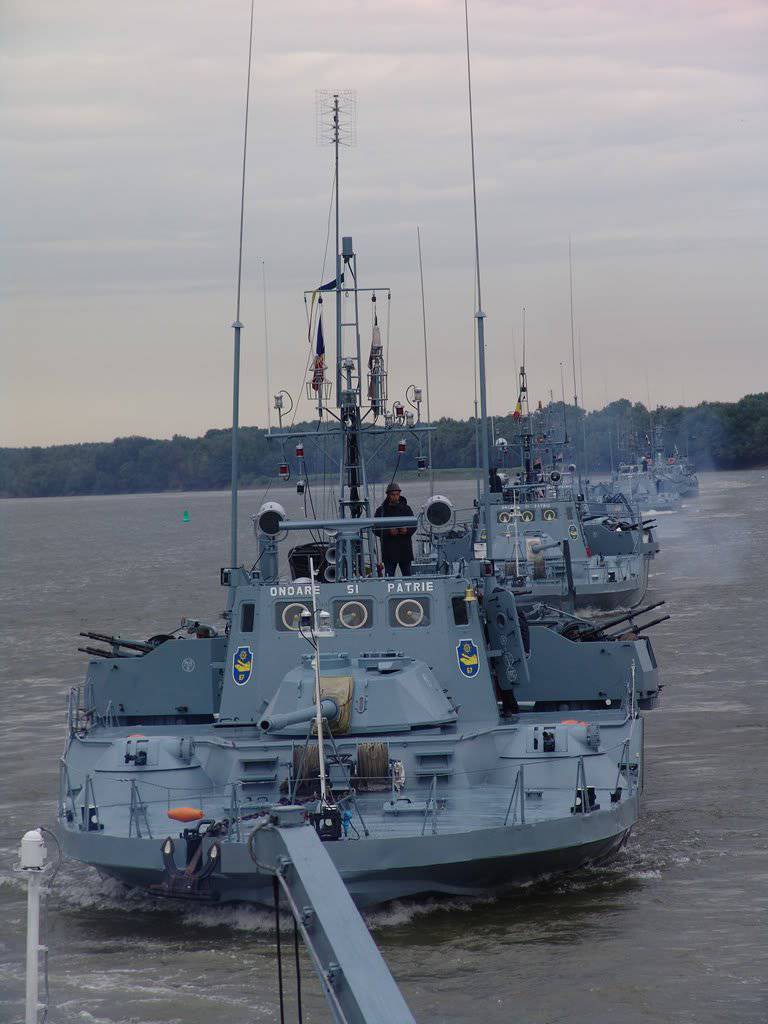
Displacement: full xnumx t.
Maximum sizes: 50,7 x 8 x 1,5 m.
Power plant: two-shaft diesel horsepower 2700
Maximum speed: 1 6 knots
Armament: 1x1 100-mm UE, 1x2 30 AU-mm, 2x4 and 2x1 14,5-mm machine guns, 2x40 122-mm RZSO BM-21, to 12 min.
Crew: 40-45 people.
Built at the shipyard in Turnu Severin in 1988-1993; the head Grivitsa (“Grivisa”), which came into operation on 21.11.1986, has now been written off. Serial ships are different from the head of the increased length of the hull and enhanced weapons (added twin 30-mm machine gun and two four-barreled machine guns). Officially classified as large armored boats (Vedete Blindante Mari).
88-th division of river armored boats equipped with nine river patrol boats (side numbers 147- 151, 154, 157, 163, 165) and an artillery boat (159).
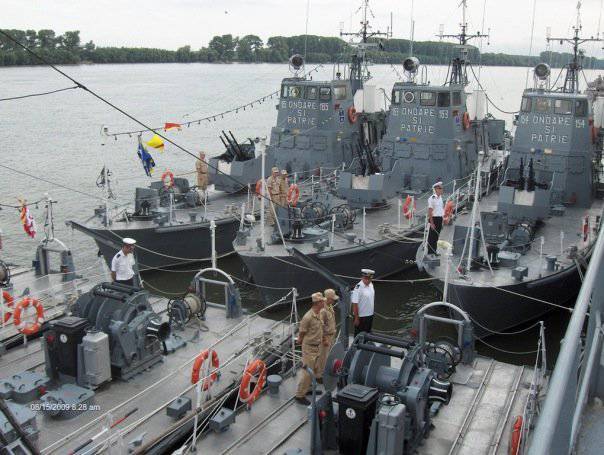
Displacement: full xnumx t.
Maximum sizes: 33,3 x 4,8 x 0,9 m.
Power plant: two-shaft diesel horsepower 870
Maximum speed: 12 knots
Armament: 2x2 14,5-mm machine gun, trawls, up to 6 min.
Built in 1975-1984's; the series consisted of 25 units (VD141 —VD165). Originally used as river minesweepers, now converted into patrol boats with a change of tactical numbers. Gradually removed from the fleet.
146-th division of minesweepers and minelayers (Constantza naval base) incorporates coastal minesweepers "Lieutenant Remus Lepri" (24), "Lieutenant Lupu Dinescu" (25), "Lieutenant Dimitrie Nicolescu" (29), "Second Lieutenant Alexander Axente" (30) and minelayer "Vice-Admiral Konstantin Belescu "(274).

Displacement: full xnumx t.
Maximum sizes: 60,8 x 9,5 x 2,7 m.
Power plant: twin-shaft diesel with a total horsepower 4800 Maximum speed: 17 knots.
Armament: 1x4 Puzha Strela MANPADS, 2x2 30-mm AU AK-230, 4xXNNUMX 4-mm machine gun, 14,5X2 RBU-5, trawls.
Crew: 60 people.
Built at the shipyard in the city of Mangalia on the Romanian project; head laid in 1984 g., entered into service in 1987-1989 gg. Equipped with acoustic, electromagnetic and contact trawls. Ship hulls are made of low-magnetic steel. Electronic armament: Nayada, Kivach radar, Mr-104 Lynx radar and Tamir-11 GAS.
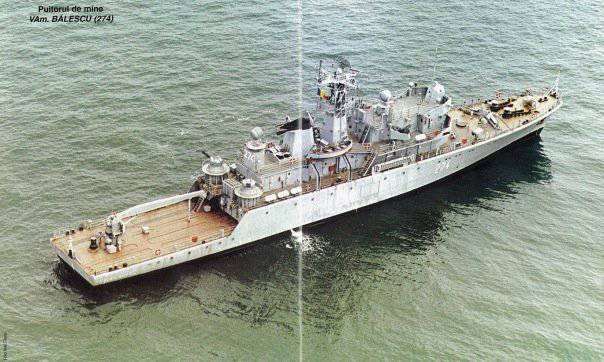
Displacement: full xnumx t.
Maximum sizes: 79,0 x 10,6 x 3,6 m.
Power plant: twin-shaft diesel with a total horsepower 6400
Maximum speed: 19 knots
Armament: 1x1 57-mm AU, 2x2 30-mm AU AK-230, 2x4 14,5-mm machine gun, 2x5 RBU-1200,200 min.
Crew: 75 people.
Built at the shipyard in the city of Mangalia on the Romanian project, 16.11.1981 was commissioned. The electronic armament consists of the MRK 302 Radka Radar, the MR-104 Lynx and Bars BAR, the Tamir-103 MRS. "Vice Admiral Konstantin Balescu" is currently used as a control / floating base ship for minesweepers. One-type "Vice-Admiral Ion Murgescu" ("Vice-Amiral loan Murgescu"), which entered into operation 11, to date, removed from the Navy. On the basis of the mine-laying project at the same shipyard in the city of Mangalia, in 30.12.1980, the hydrographic and research vessel Grigore Antipas was built.
Formations of central subordination include: 307 th battalion of marines, 39 th diving training center, naval logistics base, 243 th electronic observation center "Gallatis", marine hydrographic management, information training center and software modeling, informatics center, naval medicine center, military Mircela cel Batrin Maritime Academy, Admiral I. Mourgesku NCO non-commissioned officers training school.
307 Battalion of the Marine Corps (Babadag) is a mobile unit of the Navy, designed to conduct combat operations independently or jointly with ground forces as part of amphibious assault forces and operations to defend the coast. The number of battalions around 600 people.
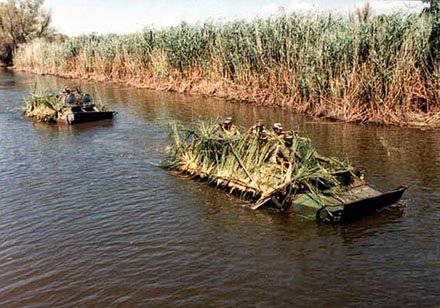
It consists of ten subdivisions: two amphibious airborne companies (capable of landing from watercrafts), two airborne assault companies on an armored troop-carrier, artillery and anti-tank batteries, reconnaissance, communications and logistics platoons, and an engineering platoon. The battalion is armed with TAVS-79, TAVS-77 and 120-mm M82 mortars.
39 th diving training center (Constantin naval base) Solves reconnaissance and special tasks in the interests of the General Staff and the headquarters of the Romanian Navy. Reconnaissance tasks include: conducting underwater reconnaissance of the coastal strip of the enemy’s territory, tracking the movement of ships and their location in the parking areas.
Special tasks, both in peacetime and in wartime, are associated with the mining of enemy ships in raids and basing stations, port and hydraulic structures, bridges; preparation of crossings and landing sites; waging counter-sabotage; search and destruction of mines and land mines; ensuring the lifting and evacuation of sunken military equipment; participation in the repair of ships (change of propellers, repair of outboard fittings, steering gears, etc.).
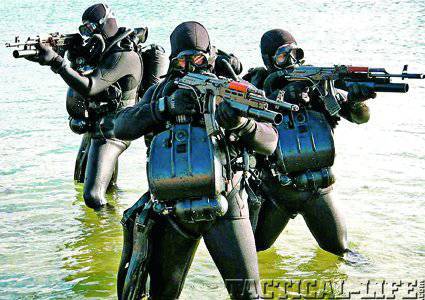
Organizationally, the center includes: 175 Division of swimmers, mobile rapid response divers squadron, two laboratories — hyperbaric (allows simulating divers to dive to a depth of 500 m) and a research and development department, repair and inspection of diving equipment, a communications unit and logistical security. The center has the following: sea tug "Grozavul", diving ship "Midia", search and rescue ship "Grigore Antipas" and diesel submarine "Dolphin" (project 877 "Varshavyanka").
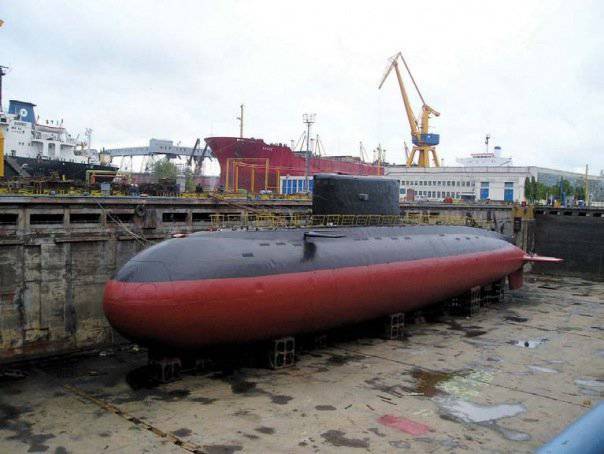
Displacement: surface 2300 t, scuba 3050 t.
Maximum sizes: length 72,6 m, width 9,9 m, draft 6,2 m.
Power plant: Single shaft DEU with full electric propulsion, 2 diesel generator DL42МХ / ПГ-141 with power 2000 kW, 1 PG-141 electric motor with power 5500 hp, 1 slow-speed electric motor with power 166 hp
Maximum speed: surface 10 knots, underwater 17 knots
Navigation range: in the RDP 6000 miles at speeds 7 knots, underwater economic 400 miles at speeds 3 knots.
Armament: 6 nasal 533- mm TA (18 torpedoes TEST-71 and 53-65 or 24 mines), 1 PU Strela MANPADS.
Crew: 52 person (12 officers)
Export modification of the submarines of the 877 project ("Varshavyanka"), built for the Navy of the USSR and Russia. Dolphinul was ordered in 1984 and became the second (after the Polish Ozhel) submarine of this type delivered to a foreign customer. Prior to 8.04.1986, it was listed as part of the Soviet Navy under the tactical number “B-801”, arrived in Romania in December 1986. Submarines of projects 877E and 877EKM besides Poland and Romania were built for the Navy of Algeria, India, China and Iran. According to the design of the submarine - two-body, single-screw. It has 2 batteries for 120 elements. Immersion depth - 300 m, autonomy - 45 days. The electronic armament consists of the MURA-MVN-110 “Murena”, the MGK-400-S “Rubicon”, and the observation radar MRP-25. According to a number of sources, the submarine “Dolphinul” is in need of repair and is currently in a state of disrepair (there are no batteries).
Combat swimmers-saboteurs are equipped with diving devices LAR-6 and -7 by Drager (Drager, Germany), as well as underwater equipment by Busheat (France), Zaeman sub (Seeman sub, Germany) and "Coltri sub" (Coltri sub, Sweden).
Base of logistics of Naval Forces (VMB Constanta) it is intended for logistics and logistics forces of the fleet, repair of ship armament and military equipment. It consists of: a naval weapons storage center, three military warehouses, four rear sections, a communications center and an engineering company. About 40 ships and boats of the reserve, as well as special and auxiliary vessels are attributed to the MTO base. The vehicle fleet has 200 vehicles.
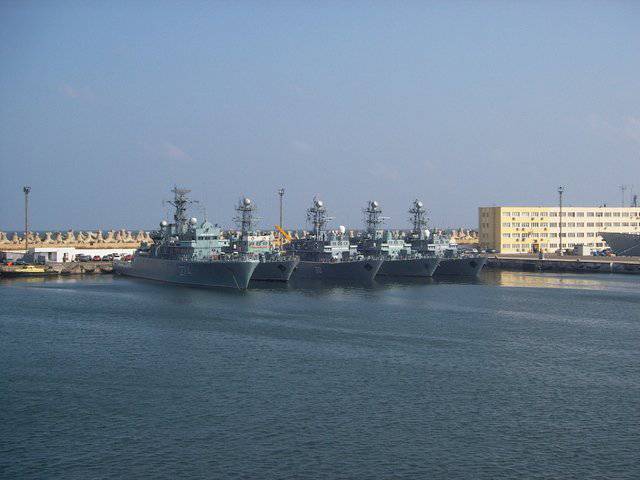
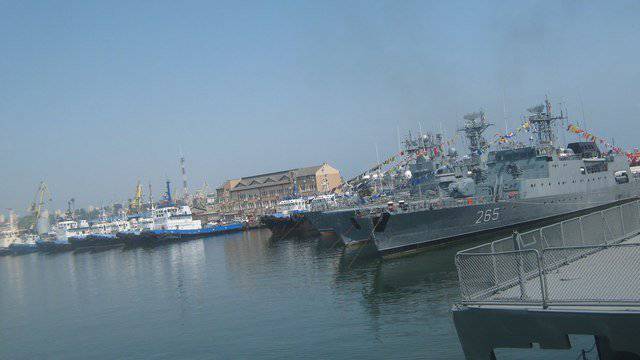
243 th center of electronic surveillance "Gallatis" (VMB Constanta) designed to monitor the sea and airspace in the area of operational responsibility of the national naval forces, electronic warfare and information management as the naval headquarters and the leadership of the armed forces.
The Maritime Hydrographic Office (naval base Constanza) deals with the problems of marine cartography and navigation, oceanography and the delimitation of maritime zones. In order to ensure the safety of navigation, an advanced system of navigation equipment was created. More than 150 objects are deployed on the coast of the country, including seven luminous lighthouses (Constanцаa, Mangalia, Tuzla, Midia, Gura, Porticea, Sfântu, Gheorghe, Sulina), one radio beacon (Constanцаa) and four fog alarms (Constanta, Mangalia, Tuzla and Sulina). The department consists of five departments: hydrography and oceanography, marine cartography, lighthouse and navigation safety, meteorology and research. At its disposal are the hydrographic vessel "Hercules" and two lifeboats.
Center for Information Training and Software Modeling (VMB Constanta) organizes events for individual combat training of naval personnel in various military occupational specialties and contributes to raising the level of general information training for servicemen in general. It allows you to work out the combat coherence of crews (combat units and subunits) without engaging the material part of ships (weapon systems).
As an educational material base in the center on the basis of personal computers, automated workplaces of specialists were deployed - combat crew posts. Here you can assess the initial operational environment, model possible options for its development and develop recommendations for the use of fleet forces depending on the tasks.
Center for Informatics (VMB Constanta) designed for information support of parts and divisions of the Navy. He coordinates the functioning of the information infrastructure in all formations of the naval forces, and is engaged in the collection, processing and analysis of data in the interests of ensuring the information security of the naval forces. The center also administers the already existing and installs new local computer networks in units and divisions of the Navy, their special technical support, as well as support for the official Navy information portal on the Internet (www.navy.ro), provides interaction with similar centers of other types and structures of armed forces
Naval Medical Center (Constanta) deals with the issues of medical support of the personnel of the Romanian Navy, conducts scientific research in the field of treatment and prevention of occupational diseases of a number of fleet specialists, in particular in the interests of the 39 diver training center. The center has the necessary staff of medical specialists, has equipped with modern equipment medical rooms and laboratories.
In the naval academy "Mircea cel Batryn" (Constantin naval base) training of specialists of all sections of the national naval forces is under way. With her there is a school of advanced training "Vice-Admiral Konstantin Belesku", designed to train officers of the command and staff of the Navy. At the disposal of the Academy are the training ship "Albatross" and the sailing brig "Mircea".
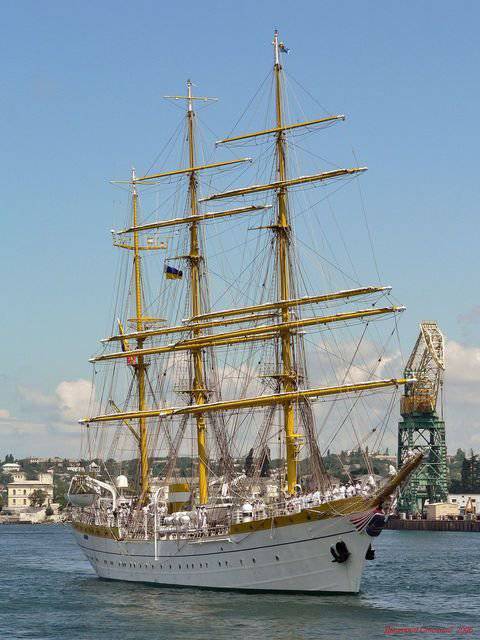
The training school for non-commissioned officers "Admiral Ion Murdzhescu" (Constantin naval base) trains specialists in the following specialties: navigation, ship artillery systems, anti-ship and anti-aircraft missile systems, underwater weapons, underwater acoustics, power ship installations, electrical equipment.
The service life of most ships and boats of the naval forces is more than 20 years. According to estimates of Romanian specialists, up to 30% of them need average and major repairs, and about 60% need current repairs. Due to the obsolescence and physical deterioration of power plants, navigation systems and communications equipment, as well as financial constraints on the purchase of spare parts and modernization, the Navy’s combat crew retains only the minimum number of warships and auxiliary ships.
In peacetime, the main forces and assets of the Navy are located in naval bases and bases in constant combat readiness. Control of the situation within the boundaries of the operational zone of responsibility is carried out by duty forces and assets consisting of:
- on the Black Sea: one frigate ship, one auxiliary vessel each at Constantza and Mangalia naval base, one diving ship;
- on the river. Danube: one monitor or a river artillery (patrol) boat, one auxiliary vessel, each at Tulcea and Braila basing points.
In the event of a crisis and with the outbreak of war, it is envisaged to carry out measures to retrofit formations and units with personnel, armament and military equipment and their deployment from places of permanent deployment to operational areas.
Navy development prospects
The construction of national naval forces is carried out in accordance with the "Strategy for the Development of the Armed Forces of Romania", calculated for the period up to 2025. Its main areas are:
- improving the organizational structure, bringing it to the standards of the Alliance;
- achieving compatibility with the naval forces of other NATO member states;
- maintenance of ships and boats in readiness, ensuring the implementation of their tasks;
- increasing the combat capabilities of the Navy by modernizing the warships in order to increase their maneuverability, firepower, reduce the level of physical fields, improve weapons, navigation and communications equipment, reconnaissance and EW, radar and hydroacoustics;
- purchase of new military equipment;
- exclusion from the Navy of ships and boats, repair and further maintenance of which is not economically viable.
During this period, the Royal Navy provides for the implementation of a number of important targeted programs. First of all, this is the completion of the deployment of an integrated communication system, monitoring and controlling the surface situation of the Navy (2013). The start of this project was launched in 2007 with the commissioning of a new information system for the combat control of the naval forces of the country (MCCIS - Maritime Command, Control and Information System). This system provided a direct connection of the headquarters of the Romanian Navy through dedicated optical, radio and radio-relay communication channels to the automated command and control system of the NATO naval command headquarters in the naval base Napoli.
Currently (with financial support from the United States), the second phase of the project is being completed, which involves the commissioning of two HFSWR coastal radar stations (manufactured by the Canadian division of Raytheon Corporation) capable of detecting surface targets in difficult weather conditions and in the conditions of electronic opposition of the enemy from a distance to 370 km. According to Western experts, the commissioning of modern radars will allow the Romanian command to bring the maritime control system in line with NATO criteria, as well as to ensure the necessary security located in the area n. Deveselu of the US military base, where by the year 2015 it was planned to deploy three batteries of the Standard-3 interceptor missiles of the US global missile defense system.
The following programs are aimed at improving the structure of the ship staff and the combat capabilities of the fleet forces:
1. Carrying out the second stage of modernization of the Regel Ferdinand and Regina Maria frigates (up to 2014 of the year), involving the replacement of power and power plants, as well as equipping ships with more powerful onboard armament.
At the first stage of modernization, the main part of the work on retrofitting frigates with new weapon systems, modern means of navigation, communications and fire control was performed by the British company BAE Systems in the Portsmouth naval base (Great Britain). In particular, modern anti-submarine complexes Terma Soft-Kill Weapon System DL 12T and an automated control system for the ship CACS 5 / NAUTIS FCS were installed on the ships.
In addition, the ships are equipped with new ones: BAE Systems Avionics MPS 2000 communication systems and navigation systems - GDMSS Inmarsat B, Sperry Marine LMX 420 GPS, Sperry Marine Mk 39.
According to calculations of the Ministry of National Defense of Romania, the total cost of work on the second stage of modernization of the frigates may be about 450 million dollars.
2. Acquisition of four multipurpose rocket corvettes (up to 2016 of the year), four minesweepers (up to 2014), a support ship and four river-sea tugs (up to 2015) for the Navy.
3. Modernization of three missile corvettes, which are in service with the 150 th missile corvettes division (up to 2014), in order to ensure compatibility of their equipment and weapon systems with ships of a similar class in other NATO countries.
4. Restoration of the submarine "Dolphin" (up to 2014 of the year), which for the last 15 years has been in non-operational condition, and the crew has completely lost professional skills in its operation. Since September 2007, the boat has been assigned to the 39-th diving training center. To restore its fighting efficiency, first of all, it is necessary to carry out a major overhaul of its power plant and chassis units, replace the batteries, and then modernize and partially replace the communications equipment.
The command of the armed forces of Romania is working on the formation of the underwater component of the forces of the Romanian fleet. In this regard, along with the commissioning of the Dolphin submarine, the possibility of purchasing three more ultra-small submarines (up to 2025 of the year) is being studied.
The implementation of all scheduled programs on time will, according to estimates by the Romanian Navy Command, significantly improve the balance of the naval personnel and the combat capabilities of the naval forces, including with their participation in NATO AMF operations in the Black and Mediterranean Seas, as provided for by the Alliance's charter.
Used materials: "Foreign Military Review", 2013, №4. C. 67-75.
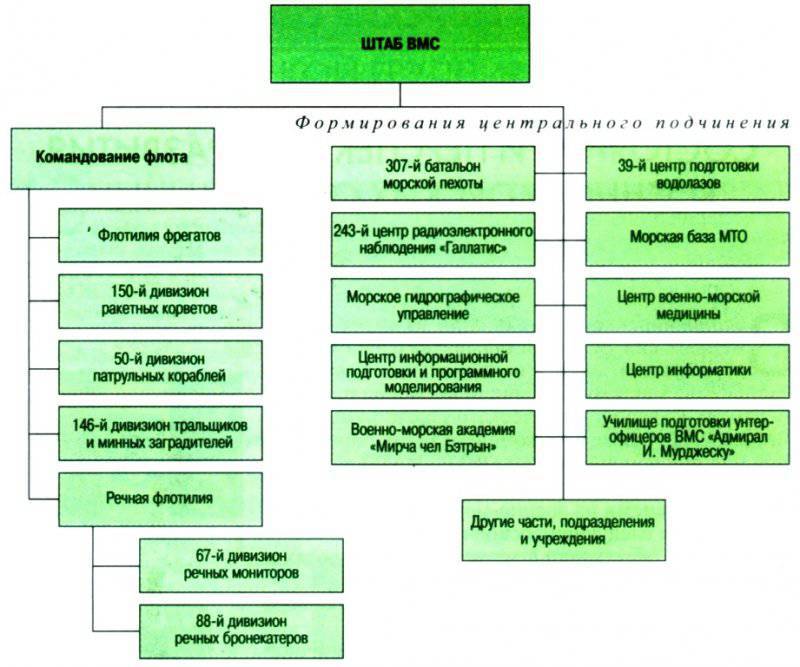
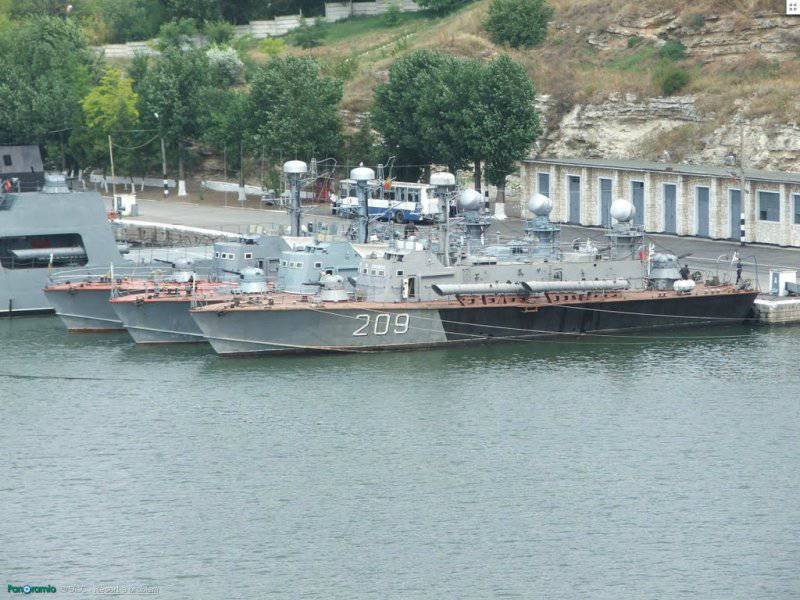
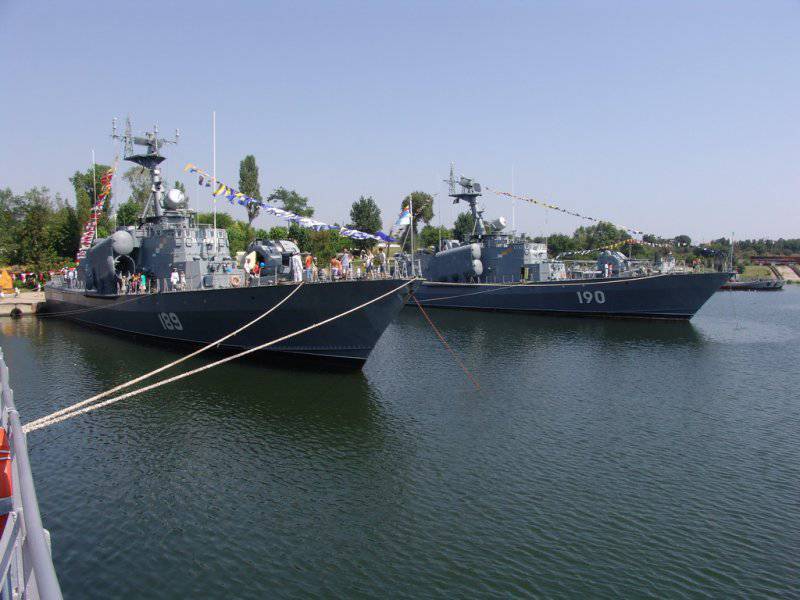
Information